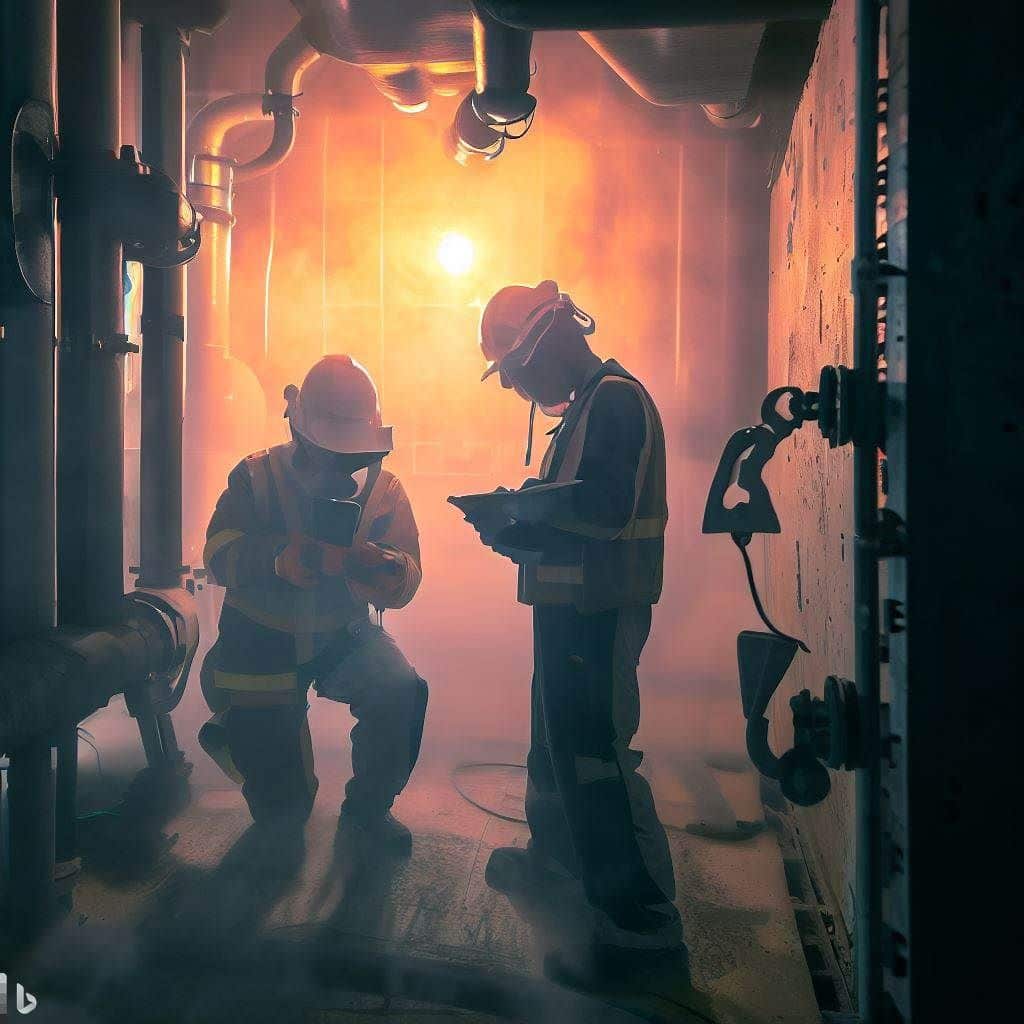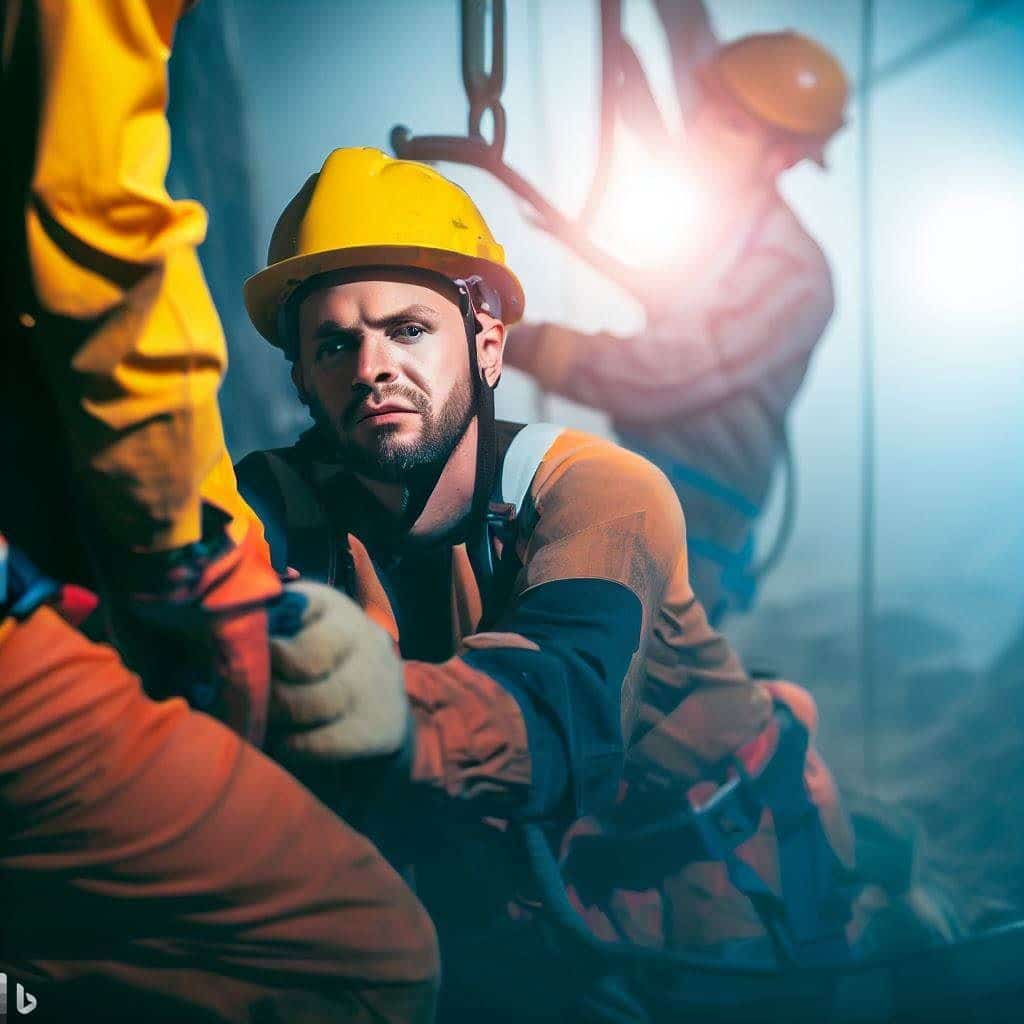Understanding the Importance of Confined Space Rescue Awareness in Workplace Safety
In the world of occupational safety, one aspect that requires critical attention is confined space rescue awareness. A confined space can be a tunnel, a manhole, a tank, or an enclosed area with limited egress where hazardous situations occur. These spaces can pose serious dangers to workers and require specific safety measures, including rescue plans.
This blog post aims to comprehensively understand confined space rescue awareness and its importance in ensuring workplace safety. The confined space environment is intrinsically hazardous. The potential risks associated with these spaces can escalate quickly, calling for an immediate and effective rescue response.
It is crucial to remember that confined space incidents can result in severe injury or even fatality. Therefore, confined space rescue awareness is not just about knowing the risks but also understanding how to prevent them and respond effectively when they occur.
Moreover, confined space rescue awareness also involves understanding the roles and responsibilities of the rescue team. This includes knowledge about the specialized equipment used in these operations, the rescue strategies, and the training requirements. Ultimately, the goal is to minimize the risks associated with confined spaces and ensure workers’ safety.
What is a Confined Space?
A confined space is an area large enough for a worker to enter and perform certain jobs, has limited or restricted means for entry or exit, and is not designed for continuous occupancy. Examples of confined spaces include storage tanks, silos, vaults, pits, manholes, tunnels, equipment housings, ductwork, pipelines, etc.
These spaces often present unique challenges and hazards not found in open work environments. It’s important to note that confined spaces can appear harmless but quickly become dangerous, especially if their conditions change. For instance, the atmosphere inside a confined space can become toxic or oxygen-deficient without warning.
Understanding the nature of confined spaces is the first step toward promoting confined space rescue awareness. This knowledge helps identify potential hazards, implement safety measures, and plan effective rescue operations, thereby ensuring the safety of workers.

The Importance of Confined Space Rescue Awareness
Confined space rescue awareness is of paramount importance in occupational safety. It is vital because it helps those working in or around confined spaces understand the risks involved and are prepared to respond appropriately in an emergency.
One of the key aspects of confined space rescue awareness is the ability to recognize potential hazards. This involves understanding the properties and behaviors of hazardous gases and materials that could be present in the confined space and the risks associated with specific tasks performed within these spaces.
Beyond hazard recognition, confined space rescue awareness also includes understanding the protocols and procedures for safely entering and exiting confined spaces. This includes knowing how to use safety equipment, following entry and exit procedures, and effectively communicating with the rescue team.
Potential Dangers in Confined Spaces
Confined spaces can host a variety of potential hazards, including limited oxygen supply or hazardous levels of toxic gases. Other dangers include the possibility of fire or explosion, exposure to harmful substances, and the risk of being trapped or injured by the collapse of loose material.
Moreover, the confined nature of these spaces can make it harder for workers to escape in an emergency. This is why having a well-trained rescue team on standby whenever work is conducted in a confined space is critical.
It’s important to note that confined space hazards are often invisible and unexpected. They can change rapidly and without warning. Therefore, continuous monitoring and vigilance are essential for safety in confined spaces.
The Role of Confined Space Rescue Teams
Confined space rescue teams play a critical role in ensuring the safety of workers. These teams are trained and equipped to respond quickly and effectively in emergencies. They are responsible for retrieving trapped or incapacitated workers from confined spaces, providing them with immediate medical aid, and transporting them to a safe location.
Rescue team members must deeply understand the risks associated with confined spaces. They must assess the situation quickly, make sound decisions, and execute rescue operations proficiently. This requires extensive training, practice, and awareness of confined space rescue.
Moreover, the rescue team is also responsible for promoting confined space safety awareness among other workers. They can do this by sharing their knowledge and experience, conducting safety drills, and providing guidance on safety protocols and procedures.
Training for Confined Space Rescue Awareness
Training is a key component of confined space rescue awareness. It equips workers with the knowledge and skills to work safely in confined spaces and respond effectively in emergencies. Training should cover various topics, including hazard recognition, safe work practices, use of safety equipment, emergency response procedures, and rescue techniques.
Furthermore, training should be an ongoing process. It should be updated and refreshed regularly to keep pace with changes in work procedures, equipment, and regulations. Remember, a well-trained worker is less likely to become a victim of a confined space accident.
Equipment and Gear for Confined Space Rescue
The right equipment is crucial for safe and effective confined space rescue operations. This includes personal protective equipment (PPE) such as helmets, gloves, and boots; respiratory equipment; fall protection gear; communication devices; lighting equipment; and rescue and retrieval systems.
It’s important for workers to know how to use this equipment correctly and to maintain it in good working condition. Regular inspections and maintenance can help ensure the equipment is ready to use when needed and can perform its intended function effectively.
Case Studies of Confined Space Accidents
Case studies of confined space accidents are stark reminders of these spaces’ dangers. They also provide valuable lessons on what can go wrong and how such incidents can be prevented in the future.
For instance, the tragic incident at Texas A&M University in 1999, where four workers died in a steam tunnel due to lack of oxygen, underscores the need for proper hazard assessment and appropriate safety equipment. Similarly, the accident at the Xcel Energy Cabin Creek Hydroelectric Plant in 2007, which claimed the lives of five workers, highlights the importance of proper training and adherence to safety procedures.

How to Improve Confined Space Rescue Awareness in the Workplace
Improving confined space rescue awareness in the workplace is a multi-faceted task. It starts with creating a safety culture that highly values worker safety. This includes providing regular training, implementing strict safety protocols, investing in quality safety equipment, and encouraging open communication about safety issues.
Moreover, organizations should have a comprehensive confined space rescue plan in place. This plan should outline the procedures for entering and exiting confined spaces, the roles and responsibilities of the rescue team, the equipment required, and the steps to be taken in an emergency.
Conclusion
In conclusion, confined space rescue awareness is integral to workplace safety. It involves understanding the nature and hazards of confined spaces, knowing how to work safely within them, and being prepared to respond effectively in an emergency. The key is to foster a culture of safety where everyone understands the importance of confined space rescue awareness and is committed to ensuring the well-being of all workers.
Frequently Asked Questions:
What is a confined space?
A confined space is an area that is large enough for a worker to enter and perform certain jobs, has limited or restricted means for entry or exit, and is not designed for continuous occupancy.
Why is confined space rescue awareness important?
Confined space rescue awareness is important because it helps those working in or around confined spaces understand the risks involved and respond appropriately in an emergency.
What are the potential dangers in confined spaces?
Confined spaces can pose various dangers, including limited oxygen supply, hazardous levels of toxic gases, risk of fire or explosion, and the possibility of being trapped or injured by the collapse of loose material.
What is the role of a confined space rescue team?
A confined space rescue team is responsible for retrieving trapped or incapacitated workers from confined spaces, providing them with immediate medical aid, and transporting them to a safe location.
What training is required for confined space rescue awareness?
Training for confined space rescue awareness should cover hazard recognition, safe work practices, the use of safety equipment, emergency response procedures, and rescue techniques. It should be an ongoing process, updated and refreshed regularly.
What equipment is needed for confined space rescue?
The equipment needed for confined space rescue includes personal protective equipment, respiratory equipment, fall protection gear, communication devices, lighting equipment, and rescue and retrieval systems.
How can confined space rescue awareness be improved in the workplace?
Confined space rescue awareness can be improved in the workplace by creating a safety culture, providing regular training, implementing strict safety protocols, investing in quality safety equipment, and encouraging open communication about safety issues.
